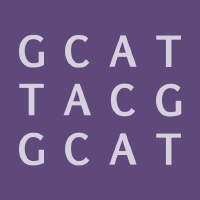Topic Menu
► Topic MenuTopic Editors


Big Data in Healthcare, Bioinformatics and Precision Medicine
Topic Information
Dear Colleagues,
A great challenge regarding the big data in healthcare, bioinformatics and precision medicine is the extraction of insightful, actionable knowledge from the streams of omics data related to patients that can be translated into effective therapies tailored to the molecular characteristics of the actual, biological state of an individual. In the context of host-related, genetic background vulnerabilities, or dysregulation of commensal microbiome promoting pathogenic infections, the role of comorbidities may now be examined through the manifold exploitation of diverse sequencing technologies.
These fascinating developments integrate a broad spectrum of experimental high-throughput techniques, such as microarrays, various next-generation sequencing (NGS) technologies, NMR, LC/GC–MS, etc. These technologies, applicable simultaneously to the same biospecimen, generate datasets of unprecedented molecular resolution that can be complemented by various types of imaging data, biosignals, or clinical records.
Crucial is the deployment of powerful, big data and analytic techniques alongside the maturation of the experimental arm, sculpting the profile of Big Data in Healthcare, Bioinformatics, and Precision Medicine, through:
- Advancements in multi-omic integration
- Molecular network modeling/visualization
- Machine/deep learning techniques in omics
- Advancing/optimizing in the utilization and integration of biomedical ontologies
- Intelligent pharmacogenomic analysis
- Nanotechnological applications/nanosensor systems
This Topic aims to collect the fruits of research in these and other areas relevant to Big Data in Healthcare, Bioinformatics and Precision Medicine. The submission of papers with solid connections to multi-omic integration, big data analytic pipelines, health monitoring/diagnostic applications is strongly encouraged.
Dr. Aristotelis Chatziioannou
Prof. Dr. Yudong Zhang
Topic Editors
Keywords
- multi-omics
- translational studies on tumors
- tumor detection and segmentation
- histopathological diagnosis
- biomedical ontologies
- semantic network modeling
- biomedical deep learning
- intelligent pharmacogenomics
- integrative bioinformatics
- biomedical big data interpretation
- network-driven interpretation
- deep learning
- machine learning
- artificial intelligence
- image processing
- personalized medicine
- bioinformatics
- health informatics
- computational biology
Participating Journals
| Journal Name | Impact Factor | CiteScore | Launched Year | First Decision (median) | APC |
|---|---|---|---|---|---|

Applied Sciences
|
2.7 | 4.5 | 2011 | 16.9 Days | CHF 2400 |

Biology
|
4.2 | 4.0 | 2012 | 18.7 Days | CHF 2700 |

Genes
|
3.5 | 5.1 | 2010 | 16.5 Days | CHF 2600 |

Journal of Personalized Medicine
|
3.4 | 2.6 | 2011 | 17.8 Days | CHF 2600 |

Cancers
|
5.2 | 7.4 | 2009 | 17.9 Days | CHF 2900 |

MDPI Topics is cooperating with Preprints.org and has built a direct connection between MDPI journals and Preprints.org. Authors are encouraged to enjoy the benefits by posting a preprint at Preprints.org prior to publication:
- Immediately share your ideas ahead of publication and establish your research priority;
- Protect your idea from being stolen with this time-stamped preprint article;
- Enhance the exposure and impact of your research;
- Receive feedback from your peers in advance;
- Have it indexed in Web of Science (Preprint Citation Index), Google Scholar, Crossref, SHARE, PrePubMed, Scilit and Europe PMC.

